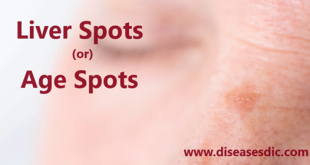Definition
Lyme disease is caused by a bacteria, Borrelia burgdorferi, that’s transmitted to humans through a bite from an infected black-legged or deer tick. Symptoms can occur anywhere from 3 to 30 days after the bite, and symptoms can be wide-ranging, depending on the stage of the infection.
Lyme disease
The chances you might get Lyme disease from a tick bite depend on the kind of tick, where you were when the bite occurred, and how long the tick was attached to you, according to the CDC. Black-legged ticks must be attached to you for at least 24 hours to transmit Lyme disease.
History
Interestingly, the disease only became apparent in 1975 when mothers of a group of children who lived near each other in Lyme, Conn., made researchers aware that their children had all been diagnosed with rheumatoid arthritis. This unusual grouping of illness that appeared “rheumatoid” eventually led researchers to the identification of the bacterial cause of the children’s condition, what was then named “Lyme disease” in 1982.
The only vector for Lyme disease in the U.S. is the black-legged tick, or deer tick, known as Ixodes scapularis. These ticks are carriers of the Lyme disease spirochete in their stomachs; Ixodes ticks may also transmit Powassan virus. The ticks then are vectors that can transmit the bacterium to humans with a tick bite. The number of cases of the tick-borne illness in an area depends on the number of ticks present and how often the ticks are infected with the bacteria. In certain areas of New York, where it is common, over half of the ticks are infected. Lyme disease has been reported most often in the northeastern United States, but it has been reported in all 50 states, as well as China, Europe, Japan, Australia, and parts of the former Soviet Union. In the United States, it is primarily contracted in the Northeast in the states from Maine to Maryland, in the Midwest in Minnesota and Wisconsin, and in the West in Oregon and Northern California.
Epidemiology of lyme disease
Lyme disease is endemic in North America, Europe, and Asia, and the distribution of the vectors directly affects the incidence of the disease. Ixodes scapularis is the principal vector found in the Northeast and Central United States and Canada, whereas Ixodes pacificus is more common on the Pacific coast. Ixodes ricinus is the principal vector in Europe. The vector in Asia is the taiga tick, Ixodes persulcatus.
United States statistics
Lyme disease is the most common vector-borne illness in the United States. Approximately 30,000 cases of Lyme disease are reported to the US Centers for Disease Control and Prevention (CDC) each year. In 2014, 33,461 cases of Lyme disease were reported, 25,359 confirmed and 8102 probable.
From 2008 (when the national surveillance case definition was revised to include probable cases) to 2012, the incidence ranged from 9.86-12.71 cases per 100,000 population in the United States. In 2014, Lyme disease was the fifth most common nationally notifiable disease.
Risk factors
- It occurs most frequently in children 5-14 years of age and adults 40-50 years of age.
- The most substantial risk factor for Lyme disease is exposure to the ticks located in the high-risk areas of the country listed above, particularly in the New England states, as well as Minnesota and Wisconsin.
- Additional risk factors include recreational and occupational exposure to ticks and outdoor activities, including gardening, in woods, and fields in the high-risk areas.
- No transplacental transmission (congenital infection) of Lyme disease from the mother to the unborn child has ever been described. Again, it is not contagious from one person to another.
Causes of lyme disease
Lyme disease is caused by Borrelia burgdorferi and Borrelia mayonii bacteria, carried primarily by blacklegged or deer ticks. The ticks are brown and, when young, often no bigger than a poppy seed, which can make them nearly impossible to spot.
To contract it, an infected deer tick must bite you. The bacteria enter your skin through the bite and eventually make their way into your bloodstream. In most cases, to transmit it, a deer tick must be attached for 36 to 48 hours. If you find an attached tick looks swollen, it may have fed long enough to transmit bacteria. Removing the tick as soon as possible may prevent infection.
Symptoms of lyme disease
Early symptoms
Perhaps the most well-known symptom of Lyme disease is a rash that looks like a bull’s-eye. The scientific name for this rash is erythema migrans. It occurs in 70-80 percent of people infected by a tick bite. The area directly around the tick bite may be red and raised and look like a normal bug bite. The rash often spreads in a circular pattern that’s lighter in the center and darker on the outer ring. However, not everyone who gets it gets the target-shaped rash.
Lyme disease symptoms
Classic signs of early Lyme disease include:
- Muscle aches
- Headache
- Fatigue
- Fever
Symptoms can start at any time between three and 30 days after infection. The incubation period can also lead to confusion about your symptoms. If you don’t remember being bitten, you may think you have the flu and you may not connect the tick bite and your symptoms.
Advanced symptoms
Some people with Lyme disease experience other, more advanced symptoms of the illness. Joint pain, especially in the knees, and a stiff neck may occur in the early-symptom stage or several months after your tick bite. Severe headaches and shooting pain in your body may keep you up at night. Dizziness and changes in your heart rate or rhythm are also advanced symptoms of Lyme disease.
Lyme disease that isn’t treated for several months can lead to more serious problems, including those that affect the nervous system. Bell’s palsy, the loss of muscle function in your face, is a neurological complication of Lyme disease. People with Bell’s palsy sometimes look like they’ve had a stroke because they can’t move the muscles on one side of their face. Movement problems, especially in the arms and legs, can also occur. Heart problems and inflammation of the eyes and liver are rare but possible in late-stage Lyme disease.
Diagnosis and test
The diagnosis begins with an assessment of your health history and a physical exam. Blood tests are most reliable a few weeks after the initial infection, when antibodies are present. Your doctor may order the following tests:
- ELISA (enzyme-linked immunosorbent assay) is used to detect antibodies against B. burgdorferi.
- Western blot can be used to confirm a positive ELISA test. It checks for the presence of antibodies to specific B. burgdorferi proteins.
- Polymerase chain reaction (PCR) is used to evaluate people with persistent Lyme arthritis or nervous system symptoms. It is performed on joint fluid or spinal fluid.
Treatment and medications
Antibiotics are used to treat this disease. In general, recovery will be quicker and more complete the sooner treatment begins.
Antibiotics
Oral antibiotics: These are the standard treatment for early-stage Lyme disease. These usually include doxycycline for adults and children older than 8, or amoxicillin or cefuroxime for adults, younger children, and pregnant or breast-feeding women. A 14- to 21-day course of antibiotics is usually recommended, but some studies suggest that courses lasting 10 to 14 days are equally effective.
Intravenous antibiotics: If the disease involves the central nervous system, your doctor might recommend treatment with an intravenous antibiotic for 14 to 28 days. This is effective in eliminating infection, although it may take you some time to recover from your symptoms. Intravenous antibiotics can cause various side effects, including a lower white blood cell count, mild to severe diarrhea, or colonization or infection with other antibiotic-resistant organisms unrelated to Lyme.
After treatment, a small number of people still have some symptoms, such as muscle aches and fatigue. The cause of these continuing symptoms, known as post-treatment Lyme disease syndrome, is unknown, and treating with more antibiotics doesn’t help. Some experts believe that certain people who get Lyme disease are predisposed to develop an autoimmune response that contributes to their symptoms. More research is needed.
Prevention of lyme disease
The prevention mostly involves decreasing your risk of experiencing a tick bite. Take the following steps to prevent tick bites:
- Wear long pants and long-sleeve shirts when in the outdoors.
- Make your yard unfriendly to ticks by clearing wooded areas, keeping underbrush to a minimum, and putting woodpiles in areas with lots of sun.
- Use insect repellent. Insect repellent with 10 percent DEET will protect you for a period of about two hours. Don’t use more DEET than what is required for the time you’ll be outside, and don’t use DEET on the hands of young children or on the faces of children less than 2 months old. Oil of lemon eucalyptus gives the same protection as DEET when used in similar concentrations. It shouldn’t be used on children under the age of 3.
- Be vigilant. Check your children, pets, and yourself for ticks. Don’t assume you can’t be infected again; people can get Lyme disease more than once.
- Remove ticks with tweezers. Apply the tweezers near the head or the mouth and pull gently. Check to be certain that all tick parts have been removed. Contact your doctor whenever a tick bites you or your loved ones.
 Diseases Treatments Dictionary This is complete solution to read all diseases treatments Which covers Prevention, Causes, Symptoms, Medical Terms, Drugs, Prescription, Natural Remedies with cures and Treatments. Most of the common diseases were listed in names, split with categories.
Diseases Treatments Dictionary This is complete solution to read all diseases treatments Which covers Prevention, Causes, Symptoms, Medical Terms, Drugs, Prescription, Natural Remedies with cures and Treatments. Most of the common diseases were listed in names, split with categories.








Does Lyme disease go away after the 14-28 days of antibiotics?
yeah it will get cure. but the rate of recovery may also vary depending upon the specific symptoms and recovery may take weeks to months after finishing antibiotic treatment.
thankx i learnt. but may you help me with the nursing care plan for a patient with Lyme disease? if the person is admitted in the hospital, how can one manage that patient and what will happen if one fail to manage those problems. ? Thank you.
please read the full post to know about the management of the lyme problem.
is lyme disease the same as congo fever. ?
lyme disease is different from congo fever.
I like this chart to stay alert